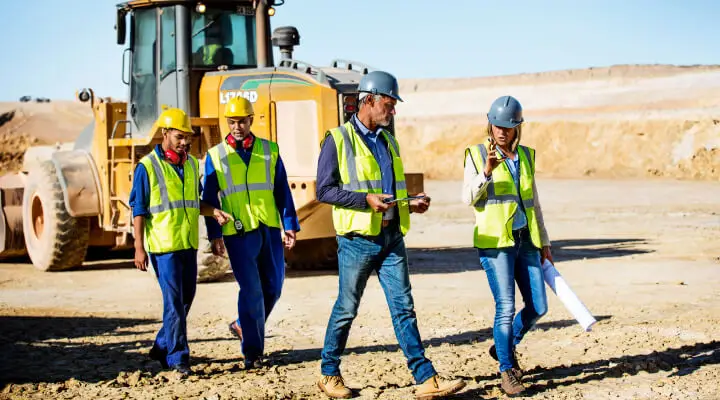If you work in an Australian workplace, you’ll have heard the acronym WHS (previously OHS) thrown around, and for good reason. Work Health and Safety is crucial to the productivity and longevity of any Aussie business.
Underscoring this is the federal Work Health and Safety Act 2011 which was enacted at a Commonwealth level with the intention that each state and territory would enforce it. Having harmonised Work Health and Safety laws makes it less ecomplicated for companies and workers to remain compliant, regardless of where you work.
The Act itself is a long document—233 pages to be exact.
Over a series of posts, we’re going to take a look into the Act and what it means for you and your business. Why? Because at Pegasus, we’ve spent years working alongside our clients in various industries; we know what we’re talking about when it comes to Work Health and Safety. Join us as we explain the Act and what it means for you – in simple, practical terms that will help you comply and stay on the right side of the rules.
It’s important to remember this post does not constitute legal advice, and shouldn’t be relied upon as such. Compliance with this post doesn’t mean your business will have satisfied all WHS requirements.
Part One: The Basic – What Is It?
In a nutshell
The Work Health and Safety Act exists to make sure workers are safe and healthy when they come to work through the elimination or minimisation of hazards and risks.
Let’s take a look
The main objective of the Work Health and Safety Act 2011 is to provide for a balanced and nationally consistent framework to secure the health and safety of workers and workplaces.
In the WHS Act, workers are to be given the highest level of protection in the workplace from hazards and risks so far as is reasonably practicable.
What is a worker?
It’s a long list. A worker is an employee, contractor or subcontractor, employee of contractor or subcontractor, employee of labour hire company, outworker, apprentice or trainee, student gaining work experience, volunteer, a person of a prescribed class.
What is a workplace?
This one is pretty basic – it’s where work is carried out for a business or undertaking. That can include any place where a worker goes, or is likely to be, while at work – not just sites and offices, but can also include vehicles, vessels, aircraft or other mobile structures; and even any waters and any installation on land, on the bed of any waters or floating on any waters.
What is reasonably practicable—a phrase repeated several times—in ensuring health and safety?
Reasonably practicable in this instance means anything reasonable which can be done to ensure health and safety considering:
(a) the likelihood of the hazard or the risk concerned occurring; and
(b) the degree of harm that might result from the hazard or the risk; and
(c) what the person knows, or ought to reasonably know, about:
(i) the hazard or the risk; and
(ii) ways of eliminating or minimising the risk.
It also considers:
(d) the availability and suitability of ways to eliminate or minimise the risk; and
(e) after assessing the risk and the available ways of eliminating or minimising it, the cost to do so, including whether that is grossly disproportionate to the risk.
Exception
Our seafarers have their own Act to follow. In relation to a vessel, such as a ship or barge, the Occupational Health and Safety (Maritime Industry) Act 1993 applies.
Nothing in this Act requires or permits a person to take or refrain from any action, that would be prejudicial to Australia’s national security, defence, or operations of the Federal Police.
Okay, now I have the basics. What do I need to do to manage risks and hazards?
Any organisation’s work activities involve a certain amount of risk which requires management. The amount of risk depends on many factors such as the scope of your work, where you work, and the workers involved.
In our experience, all organisations benefit from having risk management procedures and hazard reduction initiatives. It helps you meet your legal requirements under the Act, and assists in making your business run as smoothly as possible.
There are a few systems businesses can put in place which will assist in workplace safety:
Safety Management System (SMS) Reviews
Safety Management Systems are designed to manage safety risks in the workplace. They involve a variety of procedures to prevent people from being injured at work. These procedures can assist and include (but are not limited to):
- Work Health and Safety policy
- Environmental policy
- Risk management procedures
- Systems of work process, including incident management
- Drugs and Alcohol management procedures
- Emergency management procedures
- Training procedures, including induction management
- Sub-contractor management (if applicable)
- Continual improvement processes
- Other specific workplace policies, procedures and processes
Safety Management System reviews can be defined (by Pegasus, in this case) as independent inspections of your Work Health and Safety documents by a qualified professional. Their purpose is to ensure your organisation is taking all measures considered reasonably practicable to reduce the level of risks and hazards in your workplace.
The Pegasus Auditing team has been supporting health and safety priorities for Pegasus clients for years. You’re not alone with our team – they’re responsive and helpful, guiding organisations through the SMS review audit process, helping you to prepare and respond, and to learn and improve. It is their job to ensure our clients and their contractors are doing everything required to reduce risk with responsive, guided assistance to compliance, and resources including knowledge base and user guides to help you meet your obligations.
Risk Management and Hazard Reduction Procedures
The most obvious area, as far as reasonably practical, to ensure the safety of people at work is through risk management and hazard reduction.
Risk management in a workplace can look like this:
- Establish the context,
- Identify the risks,
- Analyse the risks,
- Control the risks, and
- Review the risks.
The most common approach to risk management and hazard reduction is known as the Hierarchy of Control. It involves six steps in ensuring the health and safety of workers.
- The most effective control measure is Elimination. If you eliminate the hazard, you eliminate the risk.
- Substitution by replacing the hazard with something safer, such as replacing solvent-based paints with water-based paints.
- Isolate the hazard for people by physically separating them from the source of harm.
- Engineering control measures by making changes in the workplace, to equipment, or the work process. This could include using trolleys or hoists to move heavy loads rather than manually lifting.
- Administration by developing procedures and delivering training to make sure people are carrying out their work safely. It can even include using signs to warn people of a hazard.
- Personal Protective Equipment is the last later of defence as it provides protection from the risk, rather than removing it.
WHS Auditing and Consultation
Regardless of what industry you’re in, a safe workplace is critical for business performance. In fact, making work health and safety a priority:
- improves health and wellbeing,
- increases performance and productivity,
- enhances resilience and job satisfaction, and most importantly,
- reduces harm and injury.
A compliant WHS management system reduces the likelihood of breaches, prosecutions, and penalties if an incident occurs. It is an investment in your workplace.
Where to start though?
Through a structured approach, the Pegasus WHS Auditing and Consultation team helps you manage your risk and reach compliance, using proven audit tools and stay up-to-date with industry standards and legislation. The Pegasus team is trusted by industry leaders like Woolworths and Schindler Lifts to complete full-service audits during Company Pre-Qualification. We give our valued partners:
- Impartial results measured against an agreed audit tool, allowing for quick response
- Regular and ongoing consultation to make the most of our partnership
- Help to identify areas of concern and guidance to respond with corrective actions and timeframes
- Regular audit and statistical results to see where you stand and where you can improve
- Benchmarks and percentage pass-marks set for a full picture of you (or your contractor’s) safety standards
- A professional audit report with agreed weightings matched to your safety priorities
In the next post of this series, we’ll be looking at what your duty is in relation to the Act – from an organisational level, right down to your duty as a worker.
The contents of this blog post do not constitute legal advice, are not intended to be a substitute for legal advice and should not be relied upon as such. Putting in place the discussed policies in this post will not guarantee your WHS compliance. You should seek legal advice or other professional advice in relation to any particular matters you or your organisation may have.





